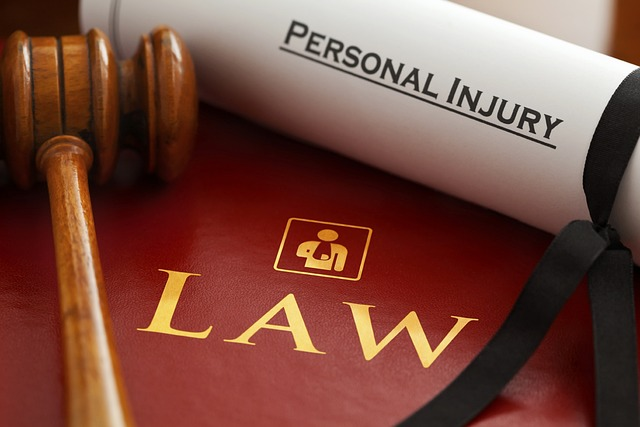Statute of Limitations California: Experienced Attorney for Personal Injury Cases

If you’ve suffered an injury in an accident that wasn’t your fault, you may have a right under California law to pursue financial compensation through a personal injury lawsuit or legal claim. However, complex rules and tight legal deadlines govern whether you can successfully take legal action after sustaining injuries. Read on for an in-depth guide on calculating and meeting filing deadlines.
What Exactly Are Statutes of Limitations?

Statutes of limitations refer to California laws that impose strict time limits on initiating legal cases relating to injuries, accidents, or medical issues. Specifically, these state laws set deadlines by which different types of personal injury and malpractice lawsuits must be filed after an incident occurs.
Miss the strict filing cutoff date for your specific kind of accident, and you’ll likely lose your legal right to seek compensation entirely. Make no mistake – statutes of limitation can completely derail a legitimate injury claim if you don’t file in time.
Why Should I Care About Filing Deadlines for Injury Cases?

Maybe you think all this fuss over legal due dates seems excessive. Can’t judges just hear cases whenever an injured victim gets around to suing for damages? Not in California. Here are some key reasons you can’t afford to drag your feet after suffering harm:
- Failure to file before California’s time limits expire will usually get your case dismissed instantly, regardless of merits. Statutes of limitations are strictly enforced.
- Deadlines range from just 6 months up to 10 years depending on subtle factors – an attorney’s expertise is key to avoid missing them.
- Numerous exceptions and “tolling provisions” can pause or extend time limits under certain circumstances, making reliable legal advice even more critical.
- Insurance companies know victims are under rigid time pressures. Delaying legal action reduces victims’ leverage and lowers settlement offers.
Meeting the precisely defined statutes of limitations is mandatory in California personal injury disputes. Connecting with an experienced lawyer quickly is key after any accident resulting in harm or monetary damages.
OK, So When Does the Clock Start Ticking?

For most civil cases in California including auto accidents and slip-and-fall incidents, the statute of limitations clock begins running on the actual date the injury occurred. But deadline calculations can get tricky fast depending on case specifics:
- If you suffer obvious traumatic harm like broken bones in a car crash, the timeline normally starts ticking precisely on the date of injury. Easy enough.
- For medical and legal malpractice that leaves hidden or latent damage though, your deadline is likely pegged to the date you first discovered the negligence.
- With child sexual abuse, California extends statutes of limitations allowing victims years or even decades longer to file claims against abusers and negligent institutions.
Pinpointing the exact date from which courts start counting down to your filing expiration is where an attorney’s expertise pays dividends. Subtle factors can dramatically impact deadlines.
Related Terms: Personal injury claim, personal injury statute, personal injury attorney, personal injury claims, personal injury lawsuits, insurance claim process, car accident, limitations begins, medical bills, state law,
How Long Do Accident Victims Have to Sue in California?
While every US state has statutes of limitations, actual time limits imposed vary drastically across states – and even within California for different case types. Major personal injury categories include:
- Two years for filing negligence lawsuits related to auto collisions, dangerous property conditions like slips and falls, product defects, professional mistakes, assault and battery, etc. Two years is the standard.
- One year for suing over fraud/deceit, breach of oral or written contracts, invasion of privacy, intentional or negligent infliction of emotional distress, libel/slander/defamation, and most statutory claims.
- Six months to submit a written administrative claim to a government agency before formally filing a lawsuit against a public entity like a city, state park, or public university.
Additionally, California courts allow a wide range of exceptions that can effectively pause or extend statutes of limitations:
- Defendants are temporarily away from California tolls statutes of limitations in civil cases until they return.
- Minors have until age 26 to file many accident and injury claims.
- Special exceptions assist older people, those declared mentally incompetent, imprisoned or serving in wartime conflicts.
Bottom line – don’t assume you know your accurate filing deadline without consulting an attorney. Subtle legal nuances have big consequences regarding time limits.
I Missed My Filing Deadline After Suffering Harm – What Now?
You’ve just discovered the statute of limitations has already expired following an auto collision, act of medical negligence, or other incident leading to monetary harm or losses. While disheartening, don’t panic or automatically conclude you have no avenue left to pursue fair compensation or damages recovery just yet. Viable options may exist:
- Consult an attorney without delay to investigate potential exceptions you may qualify for in serious injury cases involving extenuating scenarios.
- Determine whether you have grounds to pursue legal action against other parties also potentially liable for contributing towards the incident resulting in your suffering injuries or losses. Different defendants mean different filing clock start times.
- Explore secondary types of legal disputes involving insurance carriers, employers, and other entities that may emerge following accidents and could yield additional financial recovery.
Essentially, just because a statute of limitations has lapsed rendering you unable to sue certain liable parties directly doesn’t necessarily eliminate all paths to obtaining some measure of reasonable compensation through legal channels. An experienced personal injury lawyer can help uncover if options exist.
Related Terms: most personal injury cases, car accidents, government entity, injured person, wrongful death, personal injuries, criminal judgment, injured party
Key Takeaways
Hopefully, this detailed overview illuminates why statutes of limitations matter profoundly when seeking damages from accidents and negligence harmful events in California. Top takeaways include:
- Statutes of limitations impose non-negotiable, make-or-break filing due dates for each type of personal injury case. Internalize any deadline relevant to your situation.
- Consulting an attorney shortly after any incident plays a crucial role in identifying, calculating, and meeting accurate due dates.
- Insurance companies bank on accident victims waiting until it’s too late legally to take action. Late filings severely reduce settlement leverage.
- Several exceptions can extend legal filing times for minors, medical malpractice discovery delays, and other issues – but don’t rely blindly upon extensions being granted.
- Missed deadlines don’t automatically preclude various secondary routes to potential compensation recovery in complex cases.
Bottom line – with substantial financial sums potentially at stake following injuries or harm, engage seasoned legal counsel quickly to protect your right to pursue fair damages awards or settlements within California’s statute of limitations maze.













